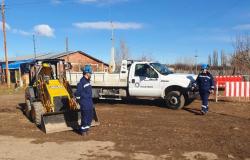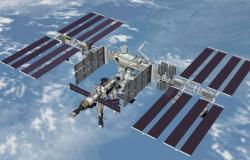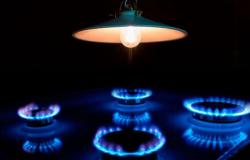NASA improved the color of images taken by LRO on its mission to the Moon. Photo: compositionLR/Fabrizio Oviedo/NASA/LRO
This Tuesday, June 4, the China National Space Administration (CNSA) reported that the Chang’e-6 probe managed to collect geological samples from the far side of the Moon. After two weeks, NASA has published some images that prove this technological feat outside the Land.
Through the reconnaissance flight of the LRO probethe United States space agency has shown the exact area where the landing module of the Chang’e-6 spacecraft landed, about 50 meters from a large crater.
NASA obtains images of the Chinese Chang’e-6 spacecraft from the far side of the Moon
NASA, through the LRO probe (Lunar Reconnaissance Orbiter), took images of the Chinese Chang’e 6 spacecraft in the hidden side of the moon June 7th. Chang’e 6 had landed on Earth’s natural satellite on June 1. When LRO, built by the Goddard Space Flight Center, passed over the landing site almost a week later, it captured a revealing image showing the module on the edge of an eroded crater about 50 meters in diameter.
The LRO camera team calculated the coordinates of the landing site: about 42 degrees south latitude, 206 degrees east longitude, at an altitude of approximately less than 5,256 meters. The color differences of the snapshot were improved for greater quality, a photograph that spanned 190 kilometers wide, an impressive distance.
Image enhanced by NASA to identify the landing site of the Chinese Chang’e-6 probe. Photo: NASA/Goddard/Arizona State University
“Basaltic lava erupted south of Chaffee S crater about 3.1 billion years ago and flowed downhill to the west, until it encountered a local topographic high, probably related to a fault. Several wrinkled ridges in this region are have deformed and uplifted the surface. The landing site is located halfway between two of these prominent ridges. This basaltic flow also overlaps a slightly older flow (about 3.3 billion years old), visible further west, but The younger flow is different because it has greater abundances of iron oxide and titanium dioxide,” the US space agency immediately explains.
What was the mission of the Chinese Chang’e-6 probe?
The China National Space Administration (CNSA) sent the Chang’e-6 space probe to the far side of the Moon to explore its surface and collect samples with its robotic arm and a drill as primary tools. The spacecraft landed in the Aitken basin, 2,500 kilometers in diameter and up to 12 kilometers deep, one of the largest impact structures in the entire solar system.
Chang’e is estimated to orbit the Moon until its return to Earth, no earlier than June 25, according to the CNSA. The Chinese flag is the first to be hoisted on the invisible side of the Earth’s natural satellite, a symbol of the Asian country’s momentary hegemony over the United States, Japan and Russia.
What is NASA’s LRO and when was it launched to the Moon?
LRO is a lunar orbiter operated by NASA’s Goddard Space Flight Center in Greenbelt, Maryland, a place dedicated to scientific research. Launched on June 18, 2009, LRO has collected data from the Moon with its six instruments and a technology demonstrator, including visible light cameras, an infrared radiometer, an ultraviolet spectrometer and others dedicated to detecting traces of water.
NASA’s LRO produced three topographic maps of the Moon. They define the reliefs of the satellite, the slopes and its roughness. The LOLA instrument, a laser altimeter, determined that the number of asteroids that impacted the planets in the solar system decreased 3.8 billion years ago.
The three topographic maps of the Moon prepared by LOLA. Photo: NASA






